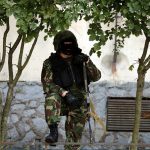RUSSIA MONITOR
Date: 13 April 2017
Native Terrorists
After the attack in St. Petersburg subway, launched by a Kyrgyz-born man, the director of Federal Security Service (FSB) Alexander Bortnikov admitted that major terrorist threat in Russia is posed by migrants coming from other countries of the Commonwealth of Independent States (CIS), not from the Middle East. It can be expected that FSB will now focus on economic migrants from the Caucasus and Central Asia. This in turn, along with an increased terrorist threat presented by the incoming Muslims, will foster xenophobia among ethnic Russians, which may mean a come back to times of ethnic clashes and riots on a massive scale. This kind of tension, added to the existing political and social distress, makes destabilization of the regime more likely.

Moscow itself contributed to such a situation, among others by making it easy for Islamists from the former Soviet Union to travel to Syria and join the jihad. As could have been expected, the problem was eliminated (indeed, the activity of Islamist rebels in Caucasus has declined, same as the number of terrorist attacks) for a short time. As the fall of Islamic State in Iraq and Syria approaches, the number of its members from the post-Soviet area who are coming back home is growing. And most of them are heading to Russia. They are trained, experienced and indoctrinated – they are gaining ideological influence over young Muslims in Russia and in other post-Soviet republics.
Russia is the biggest Muslim country in Europe; around 20 million followers of Islam live there, every tenth of them in the Moscow agglomeration. There are around 8 thousand active mosques all over the country (in 1991, there were around 300), but the problem is not just the spread but also the radicalization of Islam in Russia. Salafist communities (there may be as many as half a million of them) exist in almost every region. They also exist in prisons and in penal colonies, which have become a major source of supporters for radical Islam. Once, the inhabitants of North Caucasus were the main supply-base for Islam in Russia; today economic migrants from Central Asia and Azerbaijan are such base. There are over six million of them (at the beginning of Putin’s rule, the number was less than half a million). This community is particularly exposed to the activity of Islamic State emissaries. The overwhelming majority of Uzbeks, Tajiks and Kyrgyz men fighting in Syria on the side of jihadists adopted their slogans while staying in Russia.
All texts (except images) published by the Warsaw Institute Foundation may be disseminated on condition that their origin is stated.










